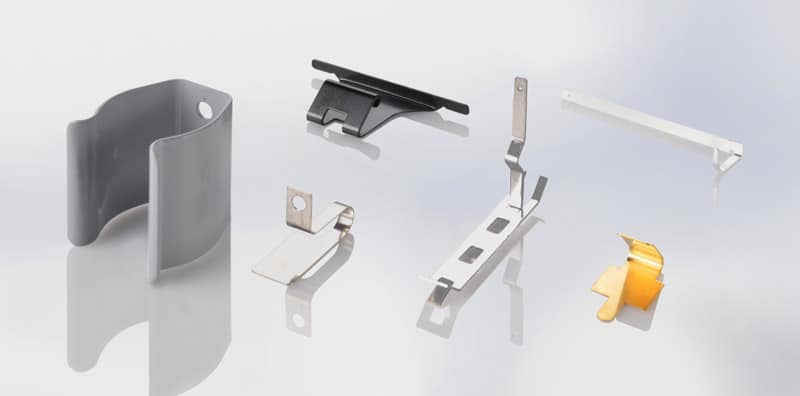
Contents
Subsequent surface treatment gives individually manufactured technical springs a number of additional desired properties. In the majority of applications, the springs should be harder and/or more resistant to rust or heat. However, the desired effects also include electrical conductivity or extreme mechanical resilience. Our overview presents the "classic" processes, but also takes a look at special processes that give a tailor-made spring construction its special uniqueness.
Blackening is a non-layer-forming process and is one of the classic optical surface treatments. During blackening, oxygen is stored in the top layer. This forms a very thin, non-metallic black skin of iron oxide on the low-alloy steel spring. Since it is part of an optical process, the coating, which is usually less than 1 micron thick, enhances the spring's appearance while protecting it at the same time. Apart from these properties, the process hardly changes the spring because it is located in a relatively low temperature range of up to 150 °C. The minimal thermal load has no effect whatsoever on the surface roughness and structure of the spring, and the dimensional accuracy also remains the same. A main effect of the process is that the technical springs take on a uniform colour. The corrosion resistance, however, is low.
In contrast to blackening, this process, which is also optical, offers a high level of protection against corrosion. The principle of the surface treatment is a galvanically produced protection system for steel surfaces. During electroplating, an extremely thin layer of zinc metal is created, which is complemented by passivation and chromating to provide the spring with a high level of protection against corrosion. The technical spring is much more durable. Bright galvanizing also prevents signs of corrosion such as so-called "white rust". The visual effect is also important here. The spring looks better, but it is also more thermally stable and more adhesive.
Stress simulations on the computer are among the services that Schaaf carries out comprehensively and meaningfully on request. More performance, but that can mean fewer possible weak points. And sometimes a real "simulation" replaces any computer, as in the case of pipette springs for medical technology described above.
Since technical springs are also usually made of stainless steel, the process typical of this material is relatively widespread. It is mainly used in medical technology to improve the appearance of the material.
thin surface layer of the workpiece is removed in a single operation using anodic dissolution. The effect is far-reaching. All impurities, cracks, stresses, particles and structural defects are cleaned. The result is impressive: metallically pure, shiny, free of burrs and particles and closed in the micro range, the spring presents itself with optimal properties of the base material. The spring was neither mechanically nor thermally stressed. The advantages of this surface treatment are good corrosion resistance with high fatigue strength and low product adhesion and deposit formation.
As a specialist in individually manufactured technical springs for special applications, Schaaf naturally also has access to the range of different surface treatments for steel springs. Many years of experience guarantee the selection of the optimal process in each case in order to achieve additional effects through the finishing of the workpieces.
| Electropolished | Surface treatment for stainless steel, optical refinement. Main use in medical devices. |
| Stained | Removal of chemically bound impurities. |
| Bright zinc plated | Optical surface treatment, anti-corrosion. |
| Shot peening | Increased dynamic life. |
| Plastic powder coating | Optical surface treatment, color fastness of the 180 different RAL colors, gloss retention. |
| Passivated | Resistance of the surface due to an oxide layer, self-healing, protection against corrosion. |
| Phosphating | Temporary protection against corrosion, favorable sliding properties |
| Teflon coating | Very good gliding properties. |
| Chrome plated | Optical surface treatment, anti-corrosion. |
| Gild | Optical surface treatment, conductivity, prevent too large switching spark. Mechanically and chemically not very resistant. |
| Copper plated | Good conductivity, anti-corrosion. |
| Nickel plated | Optical surface treatment, corrosion protection, favorable sliding properties. |
| Galvanized | corrosion protection |
| Zinc chromated* | Optical surface treatment, anti-corrosion (blue, yellow, black, olive). Color "blue" is RoHS compliant |
Bitte geben Sie hier ihre Suchanfrage ein:
